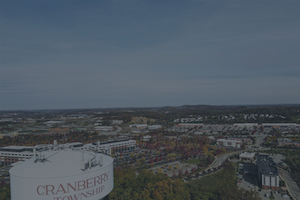‘Chocolate is a permanent thing’
It took multiple tries before Milton Hershey tasted sweet success.
Born in 1857, in Derry Township in Dauphin County, Hershey was apprenticed to Joseph Royer, a Lancaster confectioner, when he was 14.
During his four years studying the trade, Hershey learned to make a variety of items, but chocolate wasn’t widely available yet.
“Candy made in the 1870s was created through experimentation and with traditions passed down from generation to generation,” an article about Hershey’s training in the Hershey Community Archive reads. “Recipes were very vague, consisting of ingredients and some general instruction. Many were not written down but created from memory. Milton Hershey had to learn how to combine ingredients, and to understand the role of heat and time. He had to learn how to feel the crack of the candy, the right moment to remove a batch from the kettle.”
In 1876, Hershey moved to Philadelphia to start his own company.
That company lasted six years, but ran into financial troubles.
“After struggling for six years to make his first business a success, Milton Hershey closed his shop in the spring of 1882,” according to an entry about that time in the Hershey Community Archives. “While the end of this business was not a happy conclusion, Milton Hershey learned many lessons about supply and demand, credit, cash flow and the importance of limiting your product line. These were all lessons that he would put to use more profitably in future business ventures.”
After that, Hershey went on the road, going to Denver, Chicago and New Orleans before ending up in New York City and then, finally, returning to Lancaster in 1886.
“The Man Behind the Chocolate: An introduction to Milton Hershey, 1857-1945” has this to say about his travels “He had no more success in any of these places but he did come back with one important thing: the knowledge, learned from a candymaker in Denver, that fresh milk makes good candy.”
Whether that was the secret or not, Hershey finally started to find success. In 1894, the Lancaster County Portrait and Biographical Record described Hershey.
“Milton S. Hershey is the president of a caramel company that employs eight hundred hands in Lancaster, a hundred in Mt. Joy, a hundred in Geneva, Illinois and four hundred in the Chicago factory,” the piece reads. “The original business was started in the city of Lancaster and it has gown to wonderful proportions. The machinery employed is of their own invention and is all covered by patents. Their trademark is “Crystal A.” These goods are shipped to all parts of the world, including Japan, China, Australia and Europe. The capital stock is $600,000, all paid up, and they do over $1,000,000 worth of business per annum.”
Also in 1894, he would launch the company that still bears his name today.
Hershey went to the World’s Columbian Exposition in Chicago in 1893, the famed “White City” where everything from Cracker Jacks to the Ferris Wheel made their debut. Among the many machines on display were some designed to improve the chocolate making process.
According to the Hershey Community Archive, the Exposition was when he told a relative his big plan for the future.
“Caramels are a fad but chocolate is permanent,” he said. “I am going to make chocolate.”
The first Hershey chocolate wasn’t milk chocolate, though. Instead, the company sold what were then called “sweet chocolates,” which are dark chocolate with sugar added, as opposed to baking chocolate.
“Hershey’s chocolate products had imaginative names and were wrapped in colorful, fanciful packaging,” according to the Hershey Community Archive. “They were moulded into cigars, cigarettes, sticks, batons, wafers and other fanciful shapes.”
By 1899, Hershey had invented the Hershey Process, which helped him take milk chocolate nationwide. The process, which is still a trade secret, stabilizes the fresh milk used to make Hershey chocolate, and allowed Hershey to be the first mass producer of chocolate in the United States.
It was in the next year that Hershey would make a fateful decision: He was going all-in on chocolate.
So in 1900, Hershey sold the Lancaster Caramel Company to a rival for $1 million. That year also marked the launch of the first Hershey milk chocolate bar.
All that was left was to build a new factory.
“The Man Behind the Chocolate” explains why that factory ended up where it did.
“His search for the perfect site to build a complete chocolate factory led Hershey back to Derry Township,” it reads. “He had already repurchased the house where he had been born for his father. Now he was convinced that the Central Pennsylvania countryside would provide everything he needed for a factory: a plentiful water supply, fresh milk and industrious workers.”
So between 1903 and 1905, he built a new facility in what today is known as Hershey, Pa.
The factory wasn’t the only thing he built. Hershey designed a model town for his workers to live in, including a park for their recreation.
“Each year saw new improvements to the park,” the Hershey Community Archives explained about the history of what’s now Hersheypark. “In addition to weekly band concerts, vaudeville acts were booked to perform in the Park pavilion throughout the summer season. In 1908, the Park’s first official ride, a used carousel and band organ, was purchased.
“In 1909, an amphitheater, two bowling alleys and a photographic gallery were added. The following year, the Park’s Miniature Railroad opened.”
Hershey continued to expand the range of chocolates on offer. In 1907, the iconic Hershey’s Kiss was invented, with its final form, including the Hershey-branded flag, coming in 1921.
Other famous products followed, from the peanut-packed Mr. Goodbar in 1925, Hershey’s Syrup in 1926, Hershey’s Miniatures in 1930 — originally made as sales samples before being made available to the general public — and the crispy Krackel bar in 1938.
Now, more than 125 years after it was founded, Hershey has dozen of brands and made more than $11 billion in revenue in 2024.










